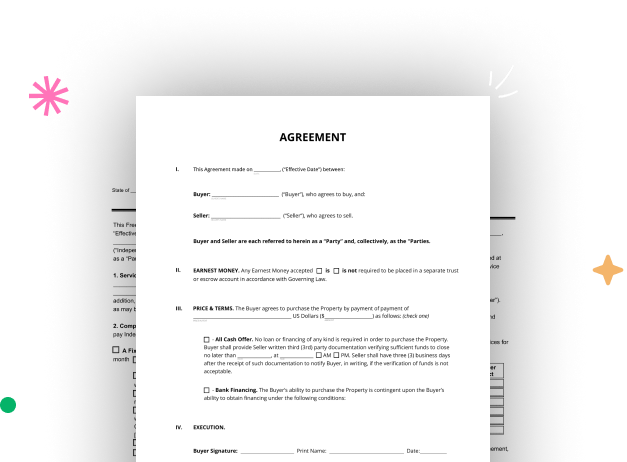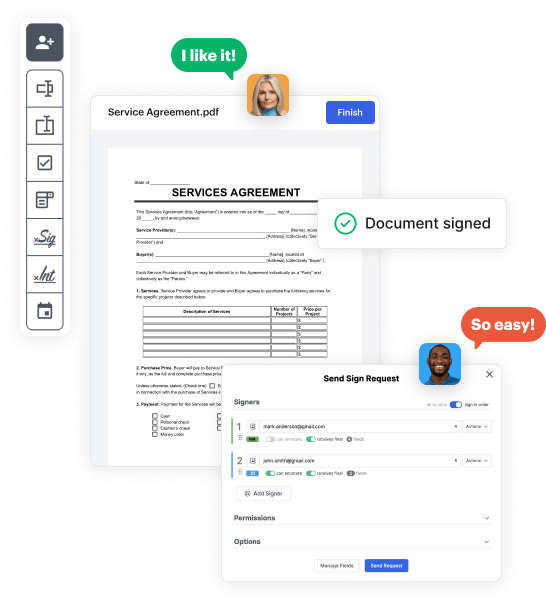

First, sign in to your DocHub account. If you don't have one, you can easily register for free.
Once you’re in, head to your dashboard. This is your primary hub for all document-focused operations.
In your dashboard, click on New Document in the upper left corner. Opt for Create Blank Document to design the Asset Protection Package from a blank slate.
Place numerous fields like text boxes, images, signature fields, and other interactive areas to your template and assign these fields to particular recipients as necessary.
Customize your template by incorporating walkthroughs or any other crucial details utilizing the text feature.
Thoroughly check your created Asset Protection Package for any discrepancies or necessary adjustments. Leverage DocHub's editing capabilities to fine-tune your document.
After finalizing, save your work. You can opt to keep it within DocHub, export it to various storage services, or send it via a link or email.